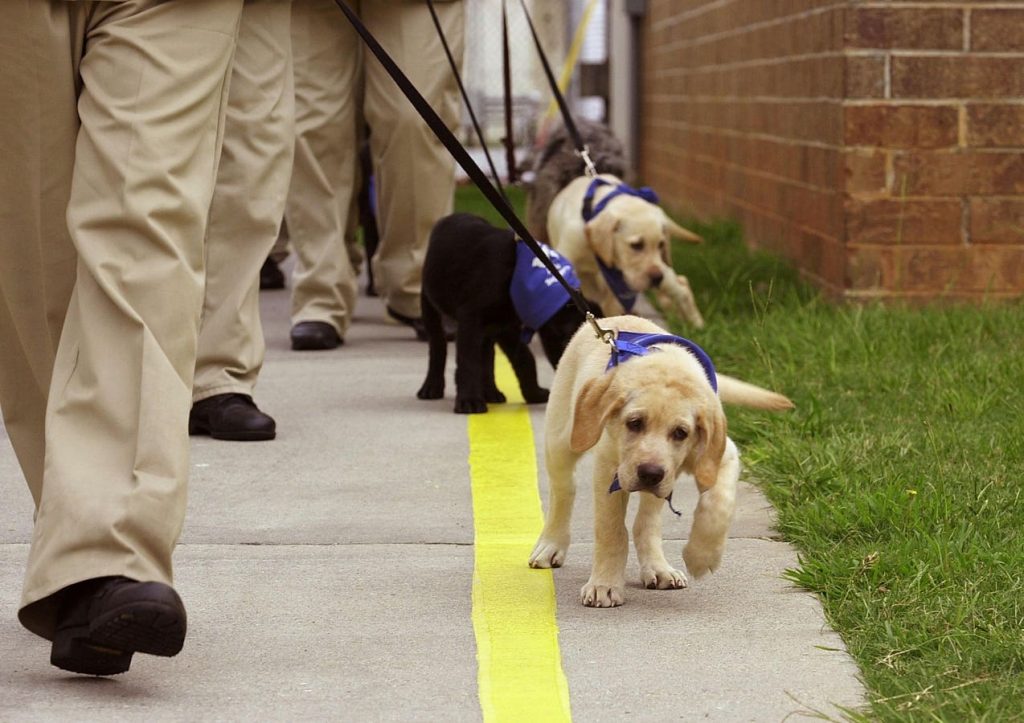The Federal Bureau of Prisons (BOP) faces a significant challenge in fulfilling its rehabilitative mission. While the ideal is to offer a range of programs that equip incarcerated individuals with marketable skills and prepare them for successful reentry into society, the reality is often hampered by chronic staffing shortages and insufficient funding. This resource deficit forces many prisoners to take the initiative and seek alternative avenues for self-improvement. This proactive approach is exemplified by both inmate-driven efforts and innovative programs like the Pawsitive Paws Dog Training Program and the introduction of pickleball as a recreational activity. Both initiatives highlight the transformative potential of seemingly simple programs in promoting rehabilitation and positive change within the prison environment.
The Pawsitive Paws Dog Training Program, implemented at FCI Thomson, stands as a beacon of hope in a system often criticized for its shortcomings. This program, born out of the ashes of a controversial and ultimately shuttered special management unit, pairs incarcerated individuals with puppies from local dog service organizations. These dogs are ultimately destined for veterans and individuals with disabilities, providing a crucial service to the community while simultaneously offering a powerful rehabilitative experience for the inmates involved. The program fosters a sense of purpose and pride among participants, reinforcing the transformative power of giving back. The rigorous selection process, coupled with formal training in dog-handling techniques, ensures the program’s safety and efficacy while also equipping inmates with potentially marketable skills for post-release employment in animal care.
The program’s success is multifaceted. It provides a tangible benefit to the community by training service dogs, addresses the emotional and psychological needs of the incarcerated trainers, and offers a pathway to potential post-release employment. This multifaceted approach distinguishes Pawsitive Paws as a model program that speaks to the potential for positive change within the often-challenging environment of correctional facilities. It underscores the importance of innovative approaches to rehabilitation that benefit both the individual and society as a whole.
Beyond vocational programs like Pawsitive Paws, recreation also plays a crucial role in prisoner rehabilitation. Traditionally, weightlifting and team sports like basketball have been staples of prison recreation. However, these activities carry inherent risks of injury, which can be particularly problematic given the often-substandard medical care available within correctional facilities. Furthermore, these activities often cater to younger, more physically fit inmates, excluding a significant portion of the prison population. Recognizing these limitations, many prisons are embracing pickleball, a rapidly growing sport with unique advantages in a correctional setting.
Pickleball’s simplicity, accessibility, and minimal equipment requirements make it an ideal recreational activity within the constraints of a prison environment. Unlike more physically demanding sports, pickleball is accessible to individuals of all ages and fitness levels, promoting inclusivity and minimizing the risk of injury. The sport also fosters valuable social skills such as teamwork, communication, and sportsmanship, contributing to a more positive and less tense prison environment. The low cost of implementation further solidifies pickleball’s viability as a valuable addition to prison recreation programs.
The benefits of pickleball extend beyond physical activity. The sport’s emphasis on teamwork and communication fosters pro-social behavior, crucial for successful reintegration into society. It provides a structured environment for positive interaction between inmates from diverse backgrounds, breaking down social barriers and building a sense of community. The opportunity to participate in organized tournaments adds another layer of engagement, fostering a sense of accomplishment and boosting self-esteem. These elements align with the broader shift towards rehabilitation-focused correctional practices, recognizing the importance of equipping inmates with the skills and habits necessary to lead productive lives upon release.
In conclusion, both the Pawsitive Paws Dog Training Program and the introduction of pickleball represent innovative approaches to rehabilitation within the BOP. These programs, while seemingly disparate, share a common thread: they provide meaningful activities that foster positive change, equip inmates with valuable skills, and promote successful reintegration into society. They offer a glimpse into the future of correctional practices, one where the focus shifts from punishment to rehabilitation, recognizing the potential for human transformation even within the confines of prison walls. The ongoing development and implementation of such programs are essential steps towards creating a more just and effective correctional system.










